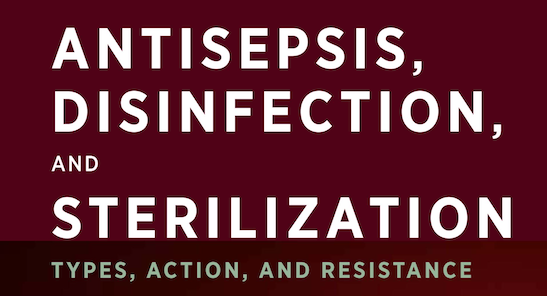Now available from STAT!Ref, the second edition of Antisepsis, Disinfection, and Sterilization: Types, Action, and Resistance is an outstanding reference for facility managers and application engineers in manufacturing plants, hospitals, and food production facilities. It is also essential for public health officials, healthcare professionals, and infection control practitioners. Please see below to learn more about this reliable reference or contact us here to add this resource to your STAT!Ref subscription.
Antisepsis, Disinfection, and Sterilization: Types, Action, and Resistance, by Gerald E. McDonnell, is a detailed and accessible presentation of the current methods of microbial control. Each major category, such as physical disinfection methods, is given a chapter, in which theory, spectrum of activity, advantages, disadvantages, and modes of action of the methods are thoroughly and clearly presented. Sufficient background on the life cycles and general anatomy of microorganisms is provided so that the reader who is new to microbiology will better appreciate how physical and chemical biocides work their magic on microbes.
Other topics in the book include:
- Evaluating the efficacy of chemical antiseptics and disinfectants, and of physical methods of microbial control and sterilization.
- Understanding how to choose the proper biocidal product and process for specific applications.
- Classic physical and chemical disinfection methods, such as heat, cold, non-ionizing radiation, acids, oxidizing agents, and metals.
- Newer chemical disinfectants, including, isothiazolones, micro-and nano-particles, and bacteriophages as control agents.
- Antisepsis of skin and wounds and the biocides that can be used as antiseptics.
- Classic methods of physical sterilization, such as, moist heat and dry heat sterilization, ionizing radiation, and filtration, along with newer methods, including, the use of plasma or pulsed light.
- Chemical sterilization methods that use ethylene oxide, formaldehyde, or a variety of other oxidizing agents.
- A detailed look at the modes of action of biocides in controlling microbial growth and disrupting microbial physiology.
- Mechanisms that microorganisms use to resist the effects of biocides.
Purchasers will want to bundle this resource with other STAT!Ref Microbiology resources seen here. As a reminder, new editions are published throughout the year for many of the titles in STAT!Ref. Browse this list to see if any of these updates pertain to titles that you have or would like to include in your subscription.
To talk to a STAT!Ref Team Member please feel free to call 800-901-5494 or fill out this form today.

